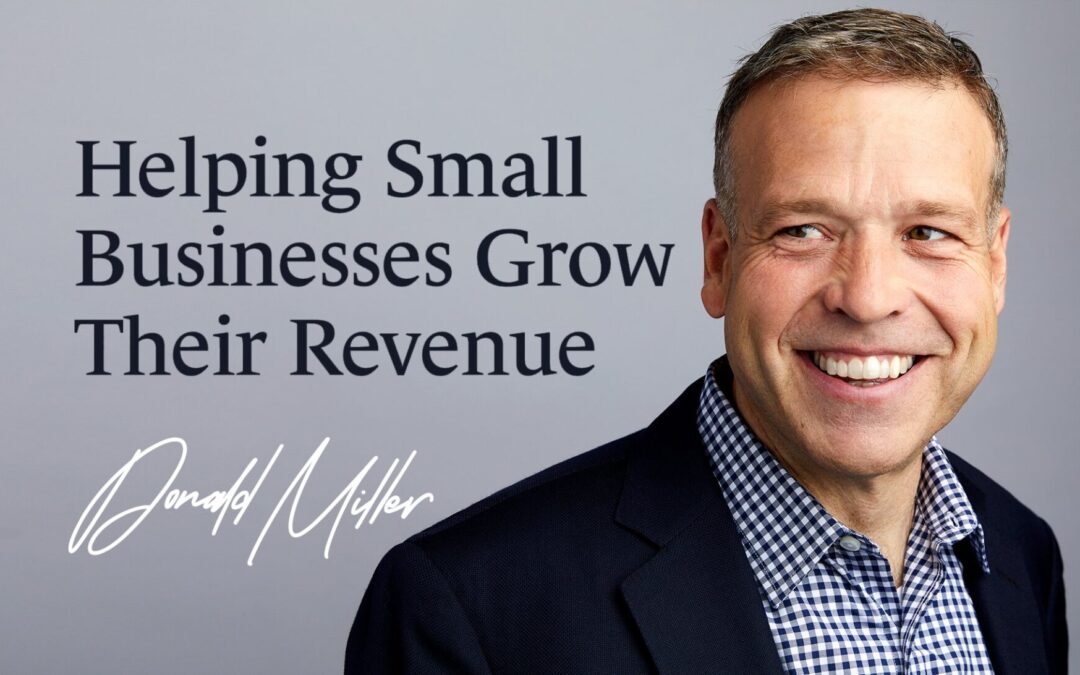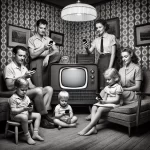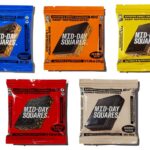How Donald Miller’s StoryBrand work can help you communicate more effectively.
With nonstop scrolling, algorithmic amnesia, and inboxes that look like Times Square at midnight, getting your brand message heard—let alone remembered—is a herculean task.
But what if your brand didn’t need more ads, louder videos, or trendier taglines? What if it just needed a better story and a simple framework?
Welcome to StoryBrand, popularized by Donald Miller in his bestselling book Building a StoryBrand.
Let’s flip the script if you’re in B2B marketing or brand strategy and still think storytelling is fluff for Nike ads and Pixar movies.
Because the truth is that clarity beats cleverness.
And story structure gives you the clearest message possible.
If someone asks you what your product/company does, and you can’t tell them succinctly, this post is for you.
Donald Miller’s Framework: Clarify or Die
Miller’s approach is built around one powerful insight: your customer is the hero—not your brand.
He repurposes Joseph Campbell’s classic Hero’s Journey into a 7-part brand messaging framework. Here’s how it works:
- A Character
The customer, not your company. They have a goal or desire. - Has a Problem
There’s something in the way of that goal—external, internal, or philosophical. - And Meets a Guide
That’s you. You have experience and empathy. - Who Gives Them a Plan
A clear, simple roadmap—two or three steps max. - And Calls Them to Action
Customers must be told what to do next (buy, schedule, sign up). - That Helps Them Avoid Failure
Remind them what’s at stake if they don’t act. - And Ends in Success
Paint the picture of the better future you help them reach.
This framework isn’t about being poetic or dramatic. It’s about making your message so clear that customers say, “Finally—this is what I’ve been looking for.”
A Real-World B2B Example: A Cyber Security Firm
Many B2B companies—especially in tech and SaaS—struggle to communicate clearly what they do. They lean into features, industry jargon, and internal language that make perfect sense to them but confuse their customers.
Donald Miller’s StoryBrand framework flips that script by putting the customer at the center of the story and positioning the brand as a guide—not the hero.
For example, imagine a cybersecurity SaaS company that protects mid-sized businesses from data breaches. Rather than saying, “We offer cutting-edge zero-trust architecture and advanced threat detection algorithms,” the company reframes its messaging using StoryBrand principles:
- The character (the customer) is an IT leader or CISO who wants to keep their company safe without overwhelming their already-stretched team.
- The problem isn’t just external (cyber threats); it’s also internal — the stress of not knowing if they’re truly protected — and philosophical: “I shouldn’t have to live in fear of a breach constantly.”
- The guide (the company) shows empathy (“We know how stressful modern threats can be”) and authority (“Our platform protects over 500 companies just like yours”).
- The plan is a 3-step path: “Book a demo → Get a custom risk audit → Sleep easier with full visibility.”
- The call to action is clear: “Schedule a free security assessment.”
- Failure is framed as the cost of inaction: downtime, fines, and reputational damage.
- Success is painted as peace of mind, operational continuity, and looking like a hero to the board.
By structuring the message this way, the SaaS company doesn’t just list features—it tells a story the customer wants to experience. The result? Resonant messaging earns trust and drives action.
A Real-World B2C Example: GrillGrate
GrillGrate isn’t a billion-dollar brand. It doesn’t have celebrity chefs as ambassadors. It makes a bright, well-engineered aluminum grilling surface that dramatically improves how food cooks on a grill.
Their original messaging, like many product-driven companies, focused heavily on features:
“Hard-anodized aluminum panels that conduct and radiate heat more efficiently than standard grates.”
Accurate? Yes. Compelling? Not really.
Then, they applied the StoryBrand framework. Here’s how it changed the game.
1. A Character:
Their customer is a backyard grilling enthusiast who wants to grill like a pro.
They’re not chefs. But they want results that make them feel like one.
2. Has a Problem:
Their food sticks to the grill, burgers flare up, and chicken gets charred outside and raw inside. They feel like they’re constantly fighting their grill instead of mastering it.
The internal problem? They’re embarrassed when the food doesn’t turn out right.
The philosophical problem? Great food brings people together. And they want to be the kind of person who delivers that.
3. Meets a Guide:
GrillGrate positions itself with empathy and authority.
“We know how frustrating it is when your food doesn’t cook how you want it to. That’s why we engineered a surface that helps you grill better every time.”
4. Gives Them a Plan:
Three simple steps:
- Buy GrillGrate panels for your existing grill
- Drop them in (no tools needed)
- Start grilling better instantly
5. Calls Them to Action:
“Shop Now” or “Choose Your Grill Type”
Direct, no friction, no confusion.
6. Helps Them Avoid Failure:
“Stop burning food, fighting flare-ups, and second-guessing your grill.”
7. Ends in Success:
“Become the backyard hero who always serves perfectly grilled food.”
Result? GrillGrate didn’t just improve conversion rates. They created raving fans who post photos, write reviews, and bring their panels to friends’ houses. Why? Because they understood that their product didn’t need a better pitch—it needed a better story.
Why Story Works (Especially in B2B)
It’s easy to dismiss this as a B2C technique. But B2B buyers are human, too. They want clarity, a reason to care, and, more than anything, trust.
The story does three things your pitch deck can’t:
- Simplifies Complexity
If your product is difficult to explain (hello, most B2B SaaS), a story gives it a backbone. It answers the questions: who is this for, what problem does it solve, and what’s the path to success? - Makes the Customer the Hero
Too many brands lead with themselves. The story flips that dynamic. You’re not Frodo. You’re Gandalf. Your job is to guide—not to hog the spotlight. - Creates Emotional Stakes
Even in B2B, decisions are emotional. Will this make me look smart? Will it reduce risk? Will it make my job easier? The story lets you answer those questions—without jargon.
Three Takeaways
1. Clarity Is the New Creativity
If your message confuses people, they’ll tune out. The story cuts through complexity and highlights what matters to your customer.
2. Stop Being the Hero
Your customer wants transformation. Your job is to help them achieve it. The sooner your brand adopts the role of guide, the sooner people will trust you.
3. Frameworks Create Focus
The StoryBrand method doesn’t stifle creativity—it gives it a clear runway. And in a noisy world, focused brands win.
Final Thought
Storytelling isn’t magic—it’s muscle. And like any good workout, it gets results when you commit. So, if your brand seems to be yelling into the void, maybe the volume isn’t the problem.
Maybe it’s just a better story.
In an earlier post, I discussed ten companies and illustrated how they use brand stories to explain who they are and what they do through this framework. You’ll be able to read it here.
Connect with me – and I’ll tell you a story.
Photos and video courtesy of StoryBrand. All rights belong to StoryBrand.
Connect with Jeff at The Marketing Sage Consultancy. Interested in setting up a call with me? Use my calendly to schedule a time to talk. The call is free, and we can discuss your brand and marketing needs.
If you want to learn more about my new offering, The Trusted Advisor Board, you can click here to learn the details. Feel free to email me at jeffslater@themarketing sage.com or text 919 720 0995. Thanks for your interest in working with The Marketing Sage Consultancy.





